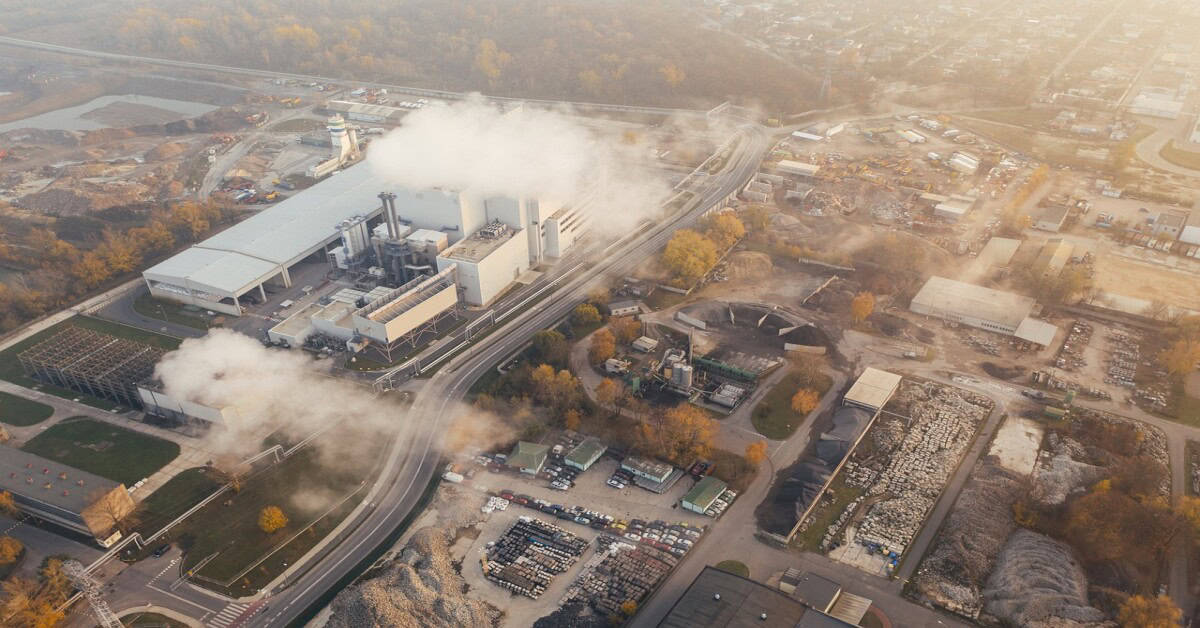Air pollution is a serious problem that affects both the environment and human health. It leads to respiratory diseases, environmental degradation, and climate change. Governments worldwide have taken steps to reduce pollution, and in India, the air pollution Act 1981 is a key piece of legislation.
This law was introduced to regulate and control pollution from various sources, especially industries. Its main goal is to ensure cleaner air and protect public health.
Over the years, the air pollution Act 1981 has played an important role in reducing harmful emissions. However, as pollution levels rise, the act’s relevance and enforcement remain crucial for a healthier future.

Background of the Air Pollution Act 1981
Before the air pollution Act 1981 was introduced, India faced severe air pollution due to rapid industrialization. Factories and vehicles released harmful gases, worsening public health and environmental conditions. Respiratory diseases increased, and air quality in cities deteriorated.
Recognizing the need for action, the Indian government passed the Air Pollution Act to regulate emissions from industries and motor vehicles. This law aimed to set pollution control standards and improve air quality nationwide. Furthermore, it gave power to pollution control boards to enforce regulations.
Compared to similar laws, such as the U.S. Clean Air Act, India’s law focused more on local industries. Therefore, the Air Pollution Act 1981 pollution control standards became a vital step in protecting both public health and the environment.
Objectives of the Air Pollution Act 1981
The air pollution Act 1981 was introduced with the primary objective of reducing air pollution and safeguarding public health. It focuses on regulating emissions from industries, vehicles, and other pollution sources. The act empowers central and state governments to take strict measures against air pollution.
It also aims to ensure cleaner air for future generations, protect the environment, and support the sustainable development of industries by implementing effective pollution control measures.
Key Provisions of the Air Pollution Act 1981
The air pollution Act 1981 pollution control standards includes several important features to help regulate and control air pollution. Some of the key provisions are:
Definition of Air Pollution: The act defines air pollution as the presence of pollutants in the atmosphere that harm human, animal, or plant life and property.
Regulatory Bodies: Central and State Pollution Control Boards are established to monitor and enforce pollution control measures. These bodies have the authority to set air quality standards and regulate emissions from industries.
Emission Standards: The act sets strict emission standards for industries, ensuring they limit harmful pollutants released into the air. Industries are required to meet these standards to operate.
Penalties and Enforcement: The act includes provisions for penalizing those who violate emission standards. Authorities can impose fines, shut down non-compliant industries, and take legal action against offenders.
These key features ensure that pollution is controlled effectively, protecting both the environment and public health.
Also Read: Air and Water Pollution: Causes, Impacts, and Prevention
Important Sections of the Air Pollution Act 1981
The Air Pollution controlling Act 1981 outlines specific sections aimed at regulating and controlling air pollution in India. Several sections define pollution, outline responsibilities, and detail penalties.
Section 2 provides a clear definition of air pollution and pollutants. It identifies harmful substances that can degrade air quality. Section 19 grants state governments the power to declare air pollution control areas where stricter rules apply.
A key provision is section 21, which requires industries to obtain consent before emitting pollutants into the air. This section helps regulate emissions and ensures industries comply with set standards.
Furthermore, section 22 prohibits the release of emissions beyond prescribed limits. Violations can lead to penalties under section 37, which enforces fines or imprisonment for non-compliance. These sections form the legal backbone of pollution control.
Pollution Control Standards Under the Air Pollution Act
The Air Pollution Act 1981 sets specific standards to control air pollution, particularly from industries and vehicles. These pollution control standards help regulate emissions of harmful gases and particulate matter. Section 21 is critical as it requires industries to get prior approval from pollution control boards before emitting pollutants.
This ensures that industries meet air quality standards before beginning operations. Moreover, the act imposes emission limits on power plants, factories, and vehicles. This helps prevent harmful chemicals, such as sulfur dioxide and nitrogen oxides, from being released into the air.
Enforcement of these standards is carried out by both central and state pollution control boards. These bodies monitor air quality, inspect facilities, and ensure compliance through regular checks.
Advanced technologies, like real-time air quality monitoring systems, are used to track emissions and ensure industries follow the rules. Penalties, including fines and shutdowns, are imposed on those who violate these standards.
While the act has helped reduce pollution, challenges remain. Rapid urbanization and industrial growth make it difficult to enforce these standards uniformly. Additionally, outdated technology in many industries limits their ability to meet emission limits.
As pollution levels continue to rise, stronger enforcement and stricter regulations may be necessary to meet modern environmental challenges.
Impact of the Air Pollution Act on Air Quality
Since its implementation, the Air Pollution Act has had a significant impact on improving air quality in India. By regulating industrial emissions and setting strict pollution control standards, the act has helped reduce harmful pollutants in the atmosphere.
Cities that once struggled with high levels of air pollution have seen measurable improvements in air quality over the years. Furthermore, the act has led to better public health outcomes, with fewer cases of respiratory diseases and reduced exposure to toxic pollutants. However, despite these positive changes, challenges remain.
Rapid urbanization, industrial growth, and lax enforcement in some regions have limited the full potential of the act. Continuous monitoring and stricter regulations are needed to ensure further progress in controlling pollution levels and improving public health.
Amendments to the Air Pollution Act 1981
Over time, the air pollution preventing Act has been updated to address evolving environmental challenges. One of the key amendments came in the form of stricter emission standards for industries and vehicles as pollution levels continued to rise.
Additionally, updated guidelines have been introduced for the use of cleaner technologies in industries. These amendments aim to keep the act relevant in the face of modern-day pollution challenges, including vehicular emissions and industrial waste.
As pollution control standards evolve, the act’s flexibility and updates are crucial for maintaining and improving air quality across India. However, some critics argue that further amendments are needed to address current loopholes and ensure stricter enforcement.
Importance of the Air Pollution Act
The air pollution Act 1981 plays a vital role in improving air quality and protecting human health. By regulating industrial emissions and vehicle pollution, the act helps reduce the harmful pollutants released into the air.
Cleaner air has been linked to fewer cases of respiratory diseases, asthma, and other health problems caused by pollution. As a result, people living in areas with better air quality experience fewer health risks.
In addition to health benefits, the act helps protect the environment. Reducing air pollution lowers the amount of harmful gases like carbon dioxide and sulfur dioxide, which contribute to climate change and acid rain.
This not only preserves ecosystems but also supports biodiversity by reducing the damage to plants and wildlife. Furthermore, cleaner air leads to healthier soil and water bodies, which are essential for agriculture and clean drinking water.
Overall, the air pollution act has been crucial in tackling pollution and its negative effects on both humans and the environment.
Conclusion
The Air Pollution Act 1981 remains a crucial tool in combating air pollution and protecting public health. By setting strict pollution control standards and enforcing regulations, it has led to measurable improvements in air quality, especially in industrial areas.
Over the years, the act has proven effective in reducing harmful emissions and ensuring that industries comply with environmental norms. However, with growing urbanization and industrial expansion, the challenges of controlling pollution persist.
The act’s flexibility, along with periodic updates, helps it stay relevant in addressing modern pollution issues. Therefore, it continues to play an important role in shaping India’s environmental policies and safeguarding its air quality for future generations.
The need for stricter enforcement and technological innovation remains critical as pollution levels evolve.






